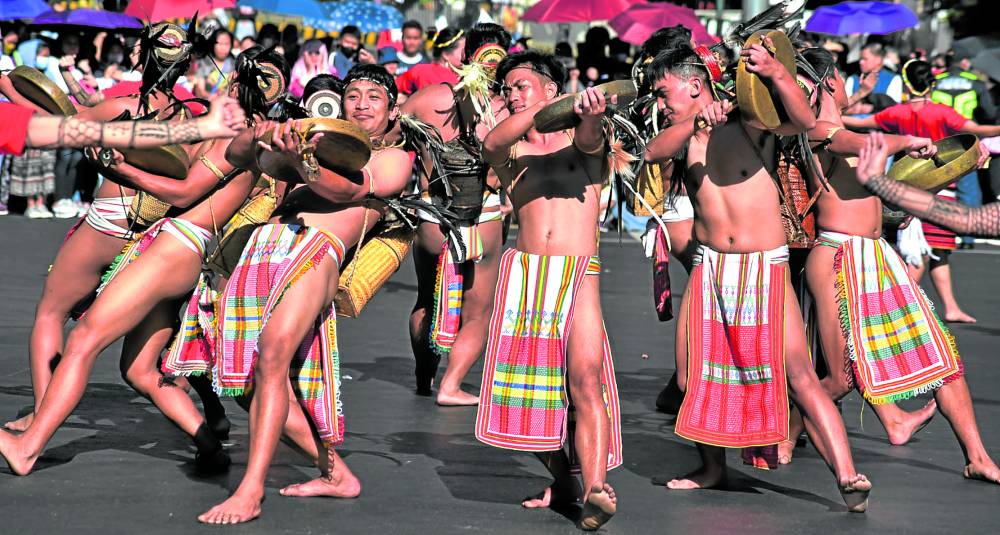Ibaloy legacy, domain now part of Baguio cultural map

CULTURE ON DISPLAY The Baguio Flower Festival or Panagbenga, which opened on Wednesday, is a celebration of the city’s legacy as an Ibaloy settlement. The culture, history and tradition of the summer capital’s original settlers are highlighted in activities during the monthlong festival. —EV ESPIRITU
BAGUIO CITY—The traditions and rich history of Ibaloys are now officially part of Baguio’s cultural map, which the city council approved and transmitted to the National Commission for Culture and the Arts this week.
Voting unanimously during its Jan. 30 session, the council adopted Book 1 of the Baguio Cultural Mapping Project, which documents 216 cultural assets in the mountain city that will require protection. Book 1 is the first of many volumes that will be incorporated into the Philippine Registry of Cultural Property. Included in Book 1 is an exhaustive documentation of Barangay Happy Hallow inside the Camp John Hay forest reservation, which is the only recognized Ibaloy ancestral domain in Baguio.
Linda Grace Cariño, a member of the mapping team, said they pieced together oral and documentary records of Ibaloys, which date back to the 16th and 17th centuries.
Architect Donna Tabangin, the city planning officer who commissioned the mapping research, said it was important to recognize the Ibaloys’ impact on Baguio’s evolution from a hill station to a financial and trade center of the Cordillera.
‘Crucial’
Preserving their domain is “crucial” to Baguio’s identity, “so it has to be protected,” she told the Inquirer.
However, the city government would need to determine what processes under the law can be explored to safeguard Ibaloy culture and their domain, Tabangin said.
The Certificate of Ancestral Domain Title granted to Happy Hallow in 2006 by the National Commission on Indigenous Peoples has been the subject of litigation because it includes portions of Camp John Hay, which is controlled by the Bases Conversion and Development Authority.
Camp John Hay was also separated from the townsite by Baguio’s new charter (Republic Act No. 11689) which could affect Ibaloy land rights and would now require “some rethinking,” said Councilor Jose Molintas, an Ibaloy lawyer.
The city council has formed an ad hoc technical working group to review the new law.
The modern charter replaced Baguio’s 1909 charter, which was penned by the late American Supreme Court Justice George Malcolm. It lapsed into law last year despite a resolution from the city council to block it in 2022.
Inventory
The city government is required by law to produce an inventory of heritage and cultural assets, such “tangible cultural properties” like buildings or monuments that have historic significance to Baguio, or songs, dances, crafts and language that are “intangible” expressions of a community.
Tabangin said the city’s mapping project is documenting more than 600 potential heritage and cultural properties.Among the tangible properties recorded by a group of researchers are Ibaloy artifacts still used by the indigenous community here, and structures like the city’s only airport at Barangay Loakan, one of the Ibaloys’ oldest settlements that existed before the American colonial government designed and built Baguio in the early 1900s.
For Book 1, Tabangin said the mapping team of researchers completed the documentation of 42 natural heritage properties (culturally valued geological places or habitats), 77 tangible immovable heritage properties, 28 tangible moveable properties, 48 intangible cultural heritage properties, 16 cultural institutions and five significant personalities. Book 1 was validated by its subjects, including the Ibaloys.